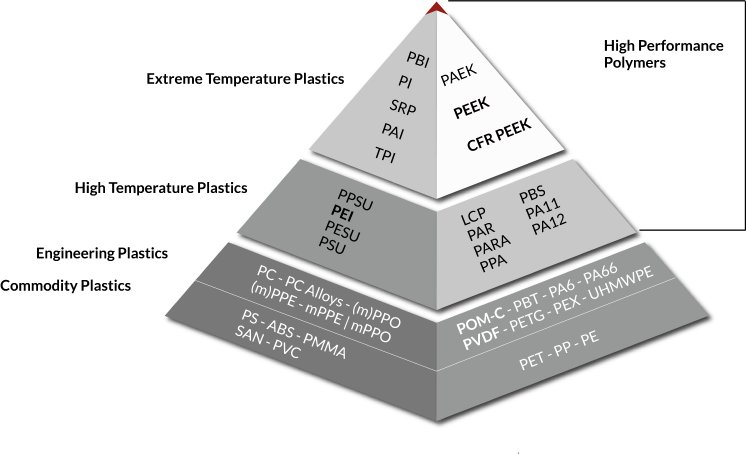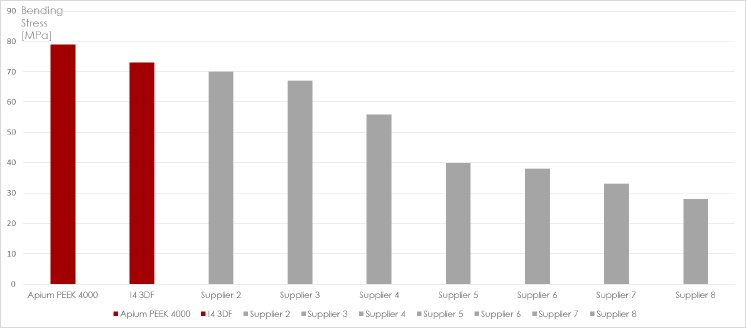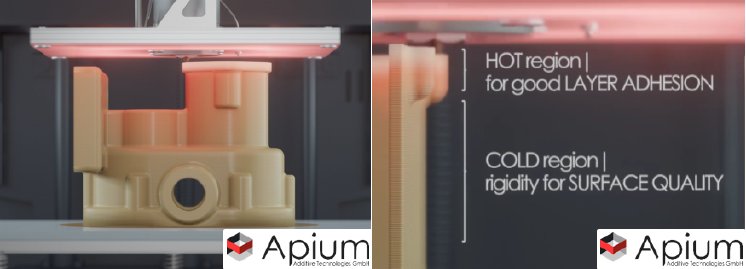Background of PEEK
High-performance thermoplastics are characterized by the high temperature resistance and high mechanical strength mentioned above, whereas PEEK is also resistant to chemically aggressive substances, high-energy radiation and is biocompatible. Thanks to these outstanding properties, PEEK is a material that is widely used in many industrial and medical applications from bioreactors to satellites, from vacuum pumps to cranial implants. In the young, growing technology industry of additive manufacturing, the processing of PEEK has proven to be particularly challenging.
But the question is, if the PEEK that 3D printer manufacturers process and promote is the same PEEK that has been used successfully for more than 20 years in the examples above? Does "the PEEK" even exist or does the PEEK differ depending on the material manufacturer it is sourced from?
PEEK was first commercially launched by the British company ICI under the name Victrex PEEK after the company patented the synthesis process in 1977. Since the early 1990s, the material has also been used in a medical context. Other well-known manufacturers such as Solvay and Evonik have also recognized the potential that the material offers and have in turn brought PEEK grades into the market. The polymers of the various manufacturers differ from each other in terms of a different synthesis method on the one hand and a different synthesis time on the other.
Structural behaviour of the PEEK
A chain can serve as a vivid picture. Like thermoplastics, this consists of individual, similar links that are connected to each other. (Figure 2)
If we would imagine for example the chain links of necklaces as single elements in a bowl and pour them out, the single chain links would trickle out without any problems. If the chain links are connected in long chains and we pour out of the bowl, one can imagine that the chains would fall out of the bowl rather than a coherent ball. The individual chains have knotted together. This behavior, which is directly related to the length of the individual chains, can be transferred analogously to thermoplastics. Thus, the mechanical resistance of long chains, known as high molecular weight, is greater than that of short chains. In return, however, they are less susceptible to entanglement than long chains, which leads to higher ability to flow. High ability to flow is particularly desirable in processing methods such as injection molding. The molten thermoplastics should reach the rearmost areas of the injection molds in a short time, fill them and then solidify rapidly. This is a desired property that could hardly be achieved with viscous thermoplastics. By contrast, higher viscosity PEEK is more suitable for the production of semi-finished products such as rods and sheets, which are ultimately cut into the final component shape by the machine.
Figure 3 gives an overview of the different types of PEEK, which are available on the market, and illustrates their mechanical properties using the example of flexural strength.
PEEK in Additive Manufacturing
Additive manufacturing is a manufacturing process that melts the material as in injection molding, but requires a slow solidification process. Unlike injection molding, filament-based 3D printers do not have limiting shapes, but form free forms similar to the extrusion of semi-finished products. The challenge of additive manufacturing is to obtain a material that exhibits the high ability to flow and has the comparable mechanical properties as the semi-finished products. To solve this problem, two possible approaches can be chosen. The first possibility is to modify the molecular structure of PEEK in such a way that properties such as high ability to flow and rapid solidification with a little distortion are obtained. Now PEEK is not only a high-performance polymer, but also belongs to the group of semi-crystalline polymers. It is the semi-crystallinity that gives PEEK its outstanding properties of high mechanical, thermal, chemical and biological strength. And the longer the chain, the stronger the polymer becomes. This intervention in the molecular structure gives the polymer better process-ability, but at the expense of its special properties.
The second way of not losing the desired mechanical properties of the PEEK grades, as known from the semi-finished product, is to ideally adapt the manufacturing process to the material. The decisive factor here is the interaction of heating and cooling process, which must be set individually for each PEEK grade and chain length. Apium Additive Technologies has chosen this approach to adapt the manufacturing process to the material instead of adapting the material to the manufacturing process for customers who need the PEEK properties of the semi-finished products for their existing products. The patented manufacturing process takes place via locally controlled heat input into the component. (Figure 4)
Summary
In summary, PEEK is not simply PEEK, but differs from each other in chain length, molecular weight and manufacturing process. The different types of PEEK are tailored to the respective processing methods. Instead of adapting the material to the printing process, the Apium company has adapted the manufacturing process to the material. Ultimately, PEEK is valued for its original outstanding properties. (U.Popp, S. Khaja, W. Schwarz)





